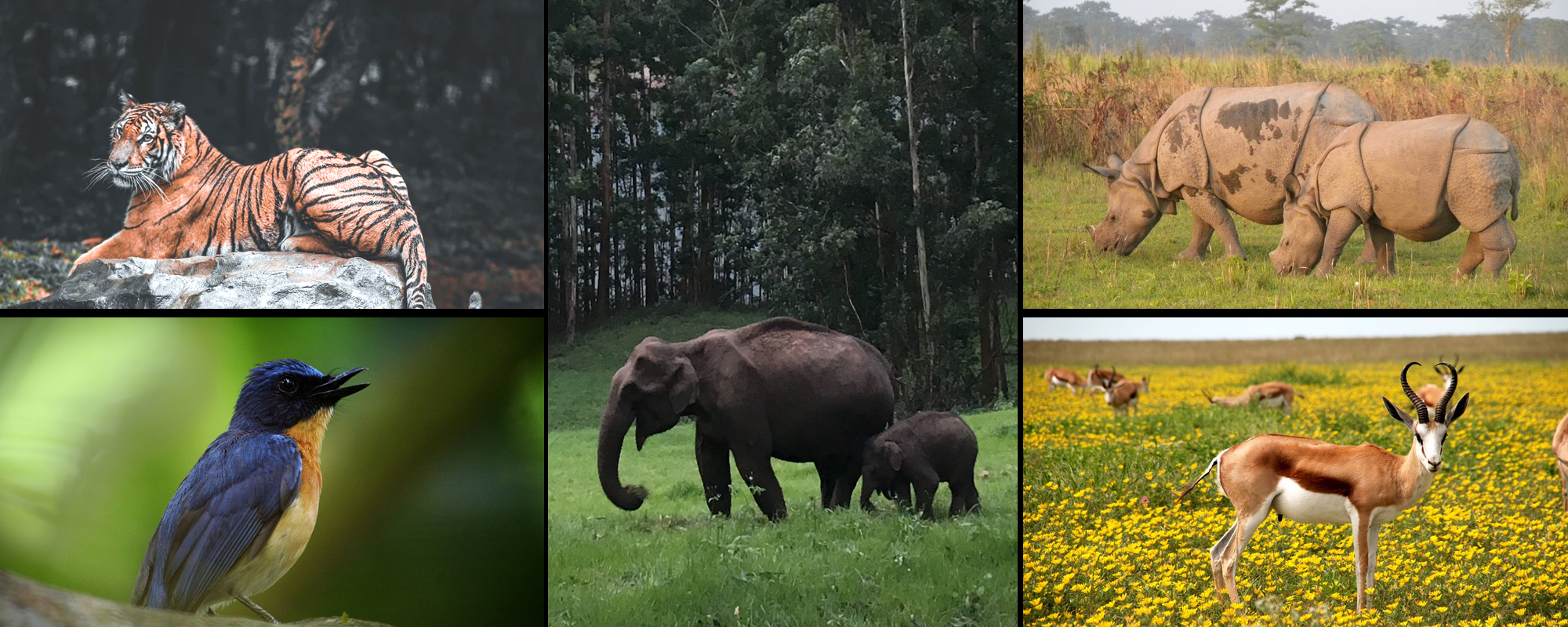
Located in the breathtaking and enchanting town of the Garhwal region in the district of Uttarkashi, Uttarakhand, Govind PashuVihar Wildlife Sanctuary and Govind National Park are the two preserved areas covering an area of over 958 square kilometers. The area was declared a National Park in the year 1991 while a part of the Upper Tones Valley was notified as a Wildlife Sanctuary long ago in the year 1955. The area also covers the Rupin and Supin valleys that form the significant catchment for the Tons, the main tributary of Yamuna River.
The altitude of the sanctuary ranges from 1300m to 6323m above sea level with an average annual rainfall of over 1000mm to 1500mm. The mountains enveloping the area are covered with snow most of the time which makes the scenery even more spectacular. During the winters, the entire area is subjected to light and heavy snowfall depending on the altitude and the temperature. Due to this varying altitude and changing weather conditions, the sanctuary is endowed with a rich forest cover and a wide-ranging floral species including many medicinal plants which form the basis for certain life-saving drugs.
The sanctuary is an abode to numerous wildlife species some of which are endangered and are only found in the Himalayan region. The scenic beauty of the area is outstanding with the Har-Ki-Dun known for its pristine greenery. The majestic Snow Leopard inhabits the place above the altitude of 3600m which is one of the main attractions of this sanctuary and calls many wildlife enthusiasts and nature lovers in its bounty. There are about 15 species of mammals and 150 species of birds that call Govind Wildlife Sanctuary their abode. Exploring this sanctuary through trekking is nothing less than a treat to the eyes with the snow-clad mountains surrounding the area and lush green landscape soothing your eyes.
Floral species like Rhododendron, Oak, and tropical Euphorbia scrub are found in abundance here. The western Himalayan broadleaf forests dominate the lower elevations of the sanctuary while the higher elevations are inhabited by the western Himalayan subalpine conifer forests. Some other plant species are Deodar Cedar, Chir Pine, Silver Fir, Blue Pine, and numerous other deciduous species.
Mammals: Snow Leopard, Black Bear, Brown Bear, Musk Deer, Bharal, Indian Porcupine, Himalayan Tahr, Serow, and Common Leopard.
Birds: Monal Pheasant, Koklas Pheasant, Western Tragopan, Himalayan Snow Cock, Golden Eagle, Steppe Eagle, Black Eagle, Bearded Vulture, Pigeon, Parakeets, Cuckoos, Owls, Minivets, Bulbuls, Tits, Warblers, Thrushes, Finches, Buntings, etc.
With an average rainfall of 1500mm in monsoons, the area experiences extreme cold and snow during the winter months with temperature going below 0 drees Celsius while the temperature during the summers ranges from 10 degrees to 25 degrees Celsius.
The best time to visit this wildlife sanctuary is between April to June and September to November when the weather is pleasant and the monsoons are over. The winters can be very harsh and the monsoons bring with them heavy rain that may result in landslides.
Nearest Train Station: The nearest train station is also in Dehradun at about 207km away, from where cabs and taxis are available to take you to the bus terminal. You can easily find buses going to Uttarkashi on a daily basis.
Nearest Airport: The nearest airport is Jolly Grant in the capital city Dehradun at a distance of 230km away. Government and private buses can be availed from the bus terminal in Dehradun to reach Uttarkashi.
Road Accessibility : To reach the sanctuary, take a bus or cab from Dehradun/Rishikesh to Dharkadhi, the nearest village to the sanctuary, about 17km away.
Copyright 2012-2022 Indiamap Digital Pvt Ltd. All rights reserved. Privacy Policy | Terms of Use